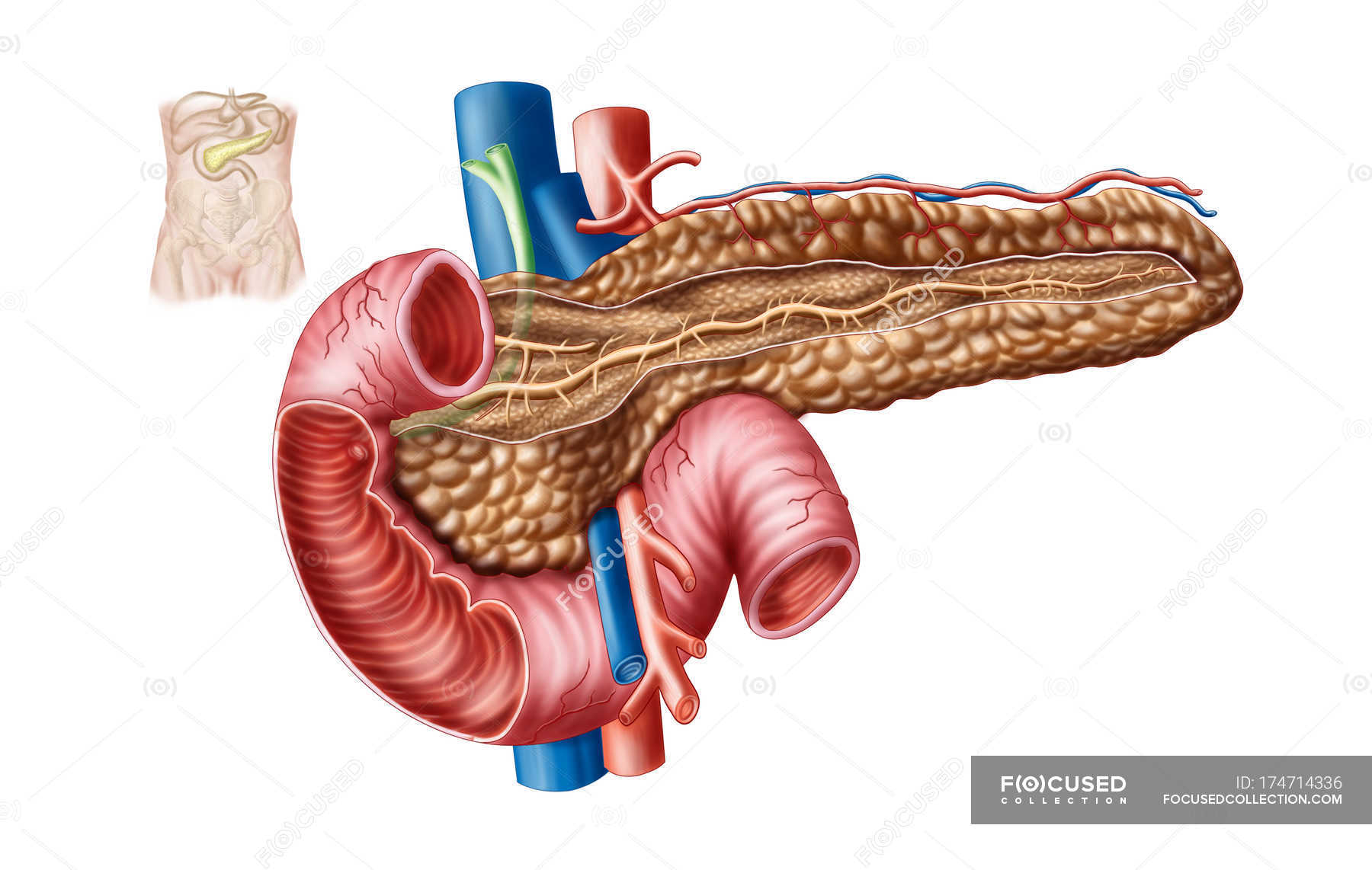
Medical illustration of pancreas anatomy on white background — view, inferior vena cava Stock
Anatomie du pancréas. Le pancréas est un organe profondément situé dans la cavité abdominale. Il comporte plusieurs parties qui peuvent être réséquées séparément par le chirurgien qui sont de droite à gauche : la tête dont la partie inférieure et gauche est le crochet ou uncus, l'isthme, le corps et la queue. La tête du.

Pin on Advanced Pathophysiology
The Body (corpus pancreatis) is somewhat prismatic in shape, and has three surfaces and three borders:The anterior surface (facies anterior) is somewhat concave; and is directed forward and upward: it is covered by the postero-inferior surface of the stomach which rests upon it, the two organs being separated by the omental bursa. Where it joins the neck there is a well-marked prominence, the.

Définition illustrée du pancréas Celiac Plexus, Acute Pancreatitis, Acute Renal Failure
The pancreas reveals two different types of parenchymal tissue: exocrine acini ducts and the endocrine islets of Langerhans. The hormones produced in the islets of Langerhans are insulin, glucagon, somatostatin, pancreatic polypeptide, and ghrelin. The pancreatic hormones are secreted by alpha, beta, delta, gamma, and epsilon cells.
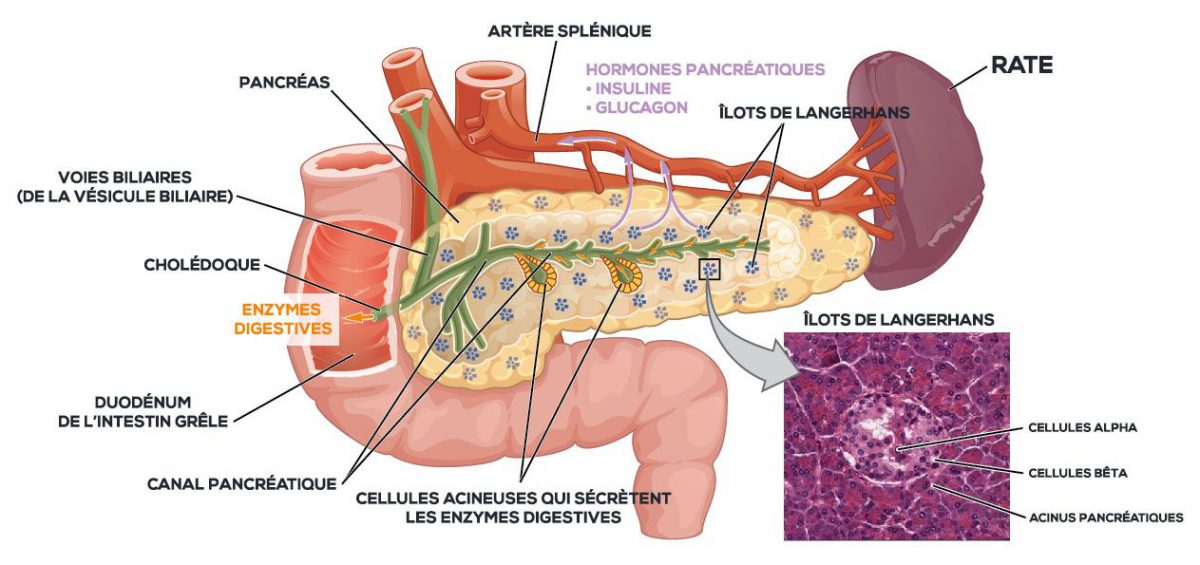
Pancréas Unité hépatobiliaire et pancréatique de Strasbourg
The pancreas is a composite organ, which has exocrine and endocrine functions. The endocrine portion is arranged as discrete islets of Langerhans, which are composed of five different endocrine cell types (alpha, beta, delta, epsilon, and upsilon) secreting at least five hormones including glucagon, insulin, somatostatin, ghrelin, and pancreatic polypeptide, respectively.
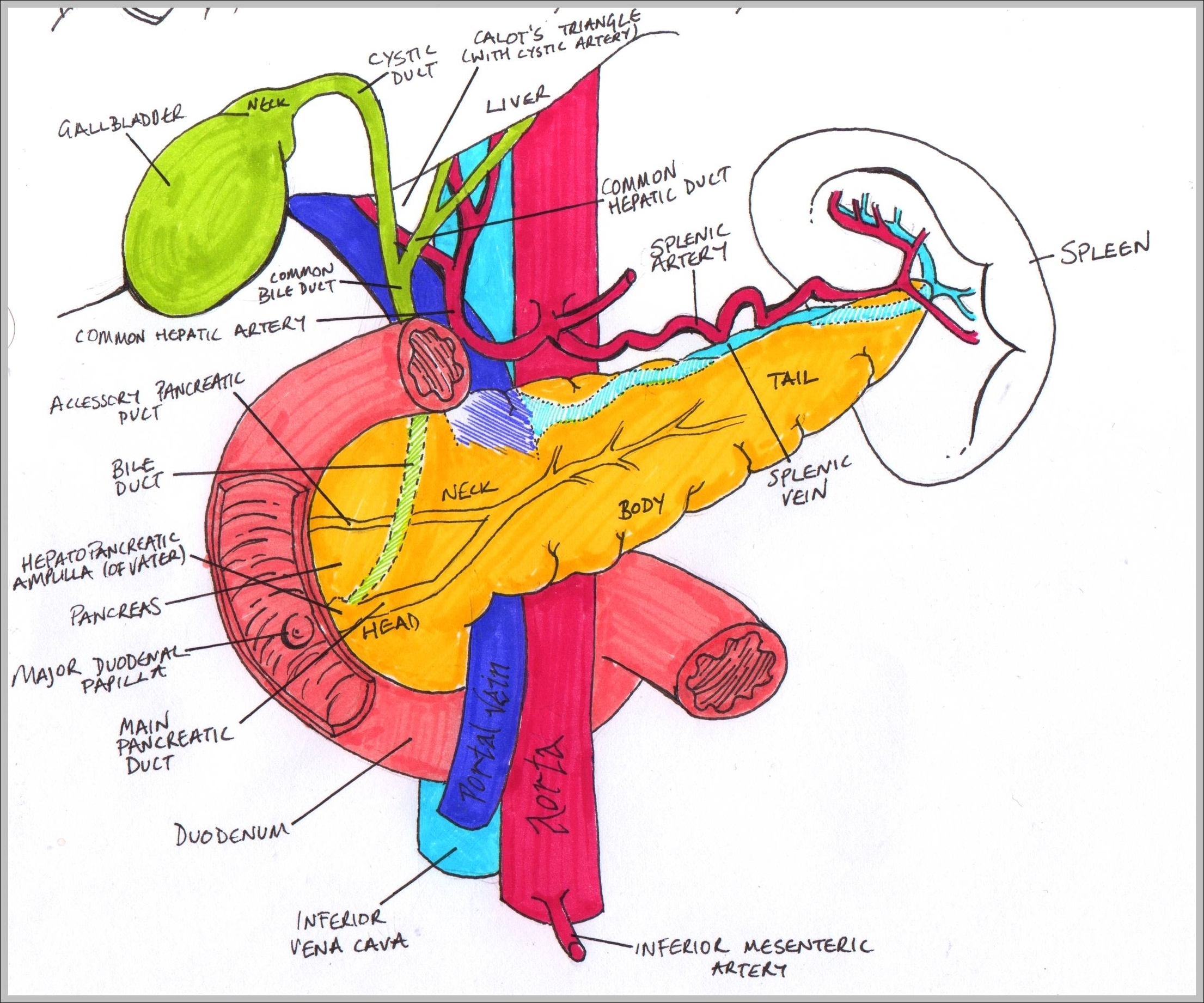
pancreas Archives Graph Diagram
Part 1. The pancreas is an endocrine gland, as it secretes hormones directly into the blood. The endocrine tissues of the pancreas that secrete hormones are called the islets of Langerhans. Within the islets of Langerhans, there are two types of cells: alpha cells and beta cells.

Figure 1 from Making β cells from adult tissues. Semantic Scholar
The pancreas is a retroperitoneal gland that facilitates digestion and metabolism. The pancreatic head and uncinate process adjoin the duodenal curvature; its neck positioned posterior to the pylorus and anterior to the portal venous confluence. The pancreatic body lies posterior to the stomach; the tail enters the peritoneum near the splenic hilum. Unique for a foregut organ, the pancreas.

Anatomie physiologie du pancréas .PDF ETUDEAZ
2.1 Anatomie. Le pancréas comprend 4 parties : Tête : contre le duodénum. Col : partie rétrécie qui relie la tête au corps. Corps : partie moyenne qui relie le col à la queue. Queue : extrémité en forme de pointe. Le pancréas a 2 conduits excréteurs : Conduit pancréatique principal de Wirsung : naît au niveau de la queue du.
:max_bytes(150000):strip_icc()/pancreas-GettyImages-478188049-5707ce105f9b581408d9a676.jpg)
L'anatomie du pancréas Fmedic
The pancreas plays a dual role in your bodily functions: Endocrine system. The pancreas secretes hormones, including the blood sugar-regulating hormones: insulin and glucagon. Exocrine system. The.

Pancreas and duodenum location Healthcare Illustrations Creative Market
The pancreas is an organ in the back of your abdomen (belly). It is part of your digestive system. The pancreas is an organ and a gland. Glands are organs that produce and release substances in the body. The pancreas performs two main functions: Exocrine function: Produces substances (enzymes) that help with digestion.

Pancréas fonction, anatomies et maladies
Rapid pulse. Upset stomach. Vomiting. Chronic pancreatitis signs and symptoms include: Pain in the upper belly. Belly pain that feels worse after eating. Losing weight without trying. Oily, smelly stools. Some people with chronic pancreatitis only develop symptoms after they get complications of the disease.
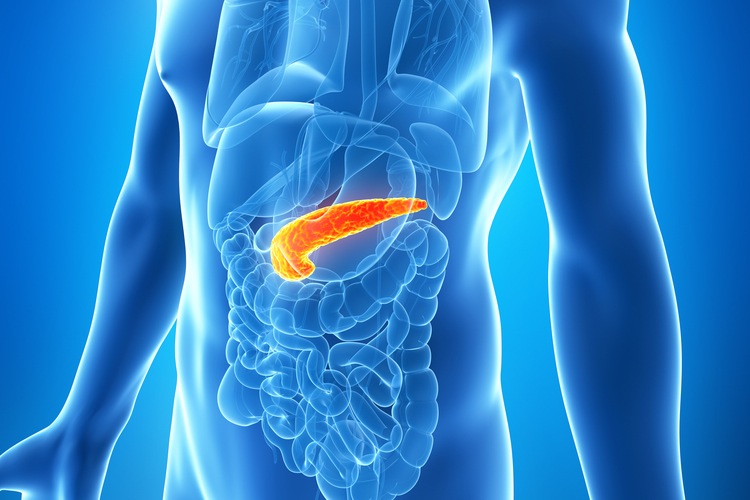
Pancreas Function, Location & Diseases Live Science
The pancreas is an oblong-shaped organ positioned at the level of the transpyloric plane (L1). With the exception of the tail of the pancreas, it is a retroperitoneal organ, located deep within the upper abdomen in the epigastrium and left hypochondrium regions. Within the abdomen, the pancreas has direct anatomical relations to several structures.
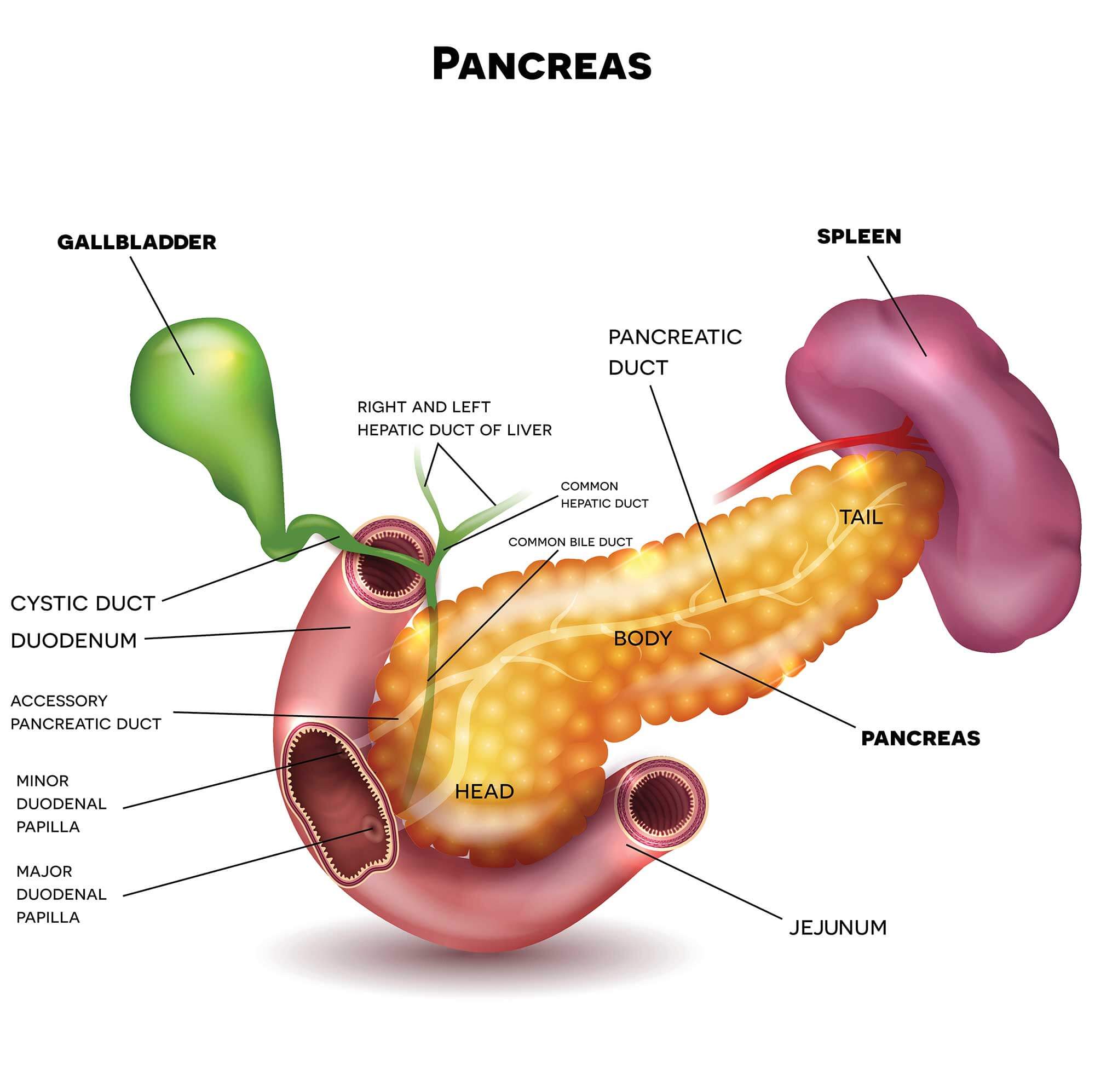
Pancreatic Cancer Types Johns Hopkins Medicine
Overview. The pancreas is a large, mixed gland composed of five parts: the head, uncinate process, neck, body and tail. The location of the pancreas is mostly retroperitoneal, except for the tail.This organ extends from the C-shaped curve of the duodenum, passes behind the stomach and finishes at the hilum of the spleen.Several pancreatic ducts extend throughout the pancreas, emptying the.
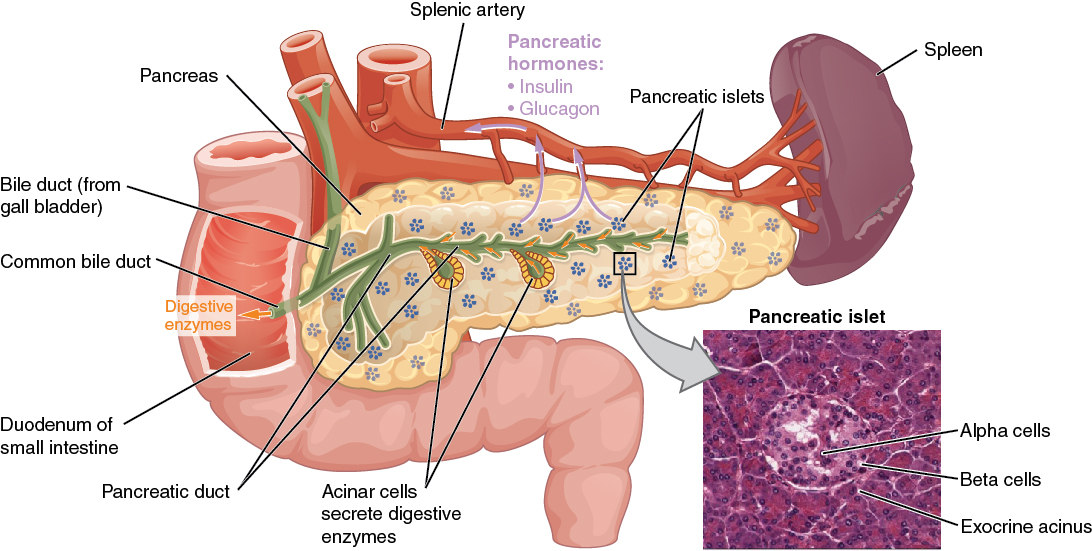
Pancreas Anatomy, Functions, and Diseases Medical Library
The body and neck of the pancreas drain into the splenic vein; the head drains into the superior mesenteric and portal veins. Lymph is drained via the splenic, celiac, and superior mesenteric lymph nodes. Parts of a pancreas: 1: Head of pancreas 2: Uncinate process of pancreas 3: Pancreatic notch 4: Body of the pancreas 5: Anterior surface of.

Beating Type 2 Diabetes Give Your Pancreas a Break! Denise A. Pancyrz "Reverse My Diabetes"
The pancreas is an elongated, tapered organ located across the back of the belly, behind the stomach. The right side of the organ—called the head—is the widest part of the organ and lies in the curve of the duodenum, the first division of the small intestine. The tapered left side extends slightly upward—called the body of the pancreas.

Pancreas Medical anatomy, Human anatomy and physiology, Anatomy
A retenir. Le pancréas a un double rôle : produire les sucs gastrique et réguler la glycémie. Le pancréas est une glande qui mesure 15 cm de long sur 4 cm de large. Un dysfonctionnement de la production d'insuline par le pancréas est la cause du diabète. Le cancer du pancréas touche en priorité les diabétiques et les personnes.

Pancreas and stomach anatomy anterior view Medical drawings, Medical
Le pancréas est un organe vital de l'organisme. Cette glande possède plusieurs fonctions sécrétrices, notamment essentielles à la digestion des aliments et à la régulation de la glycémie.